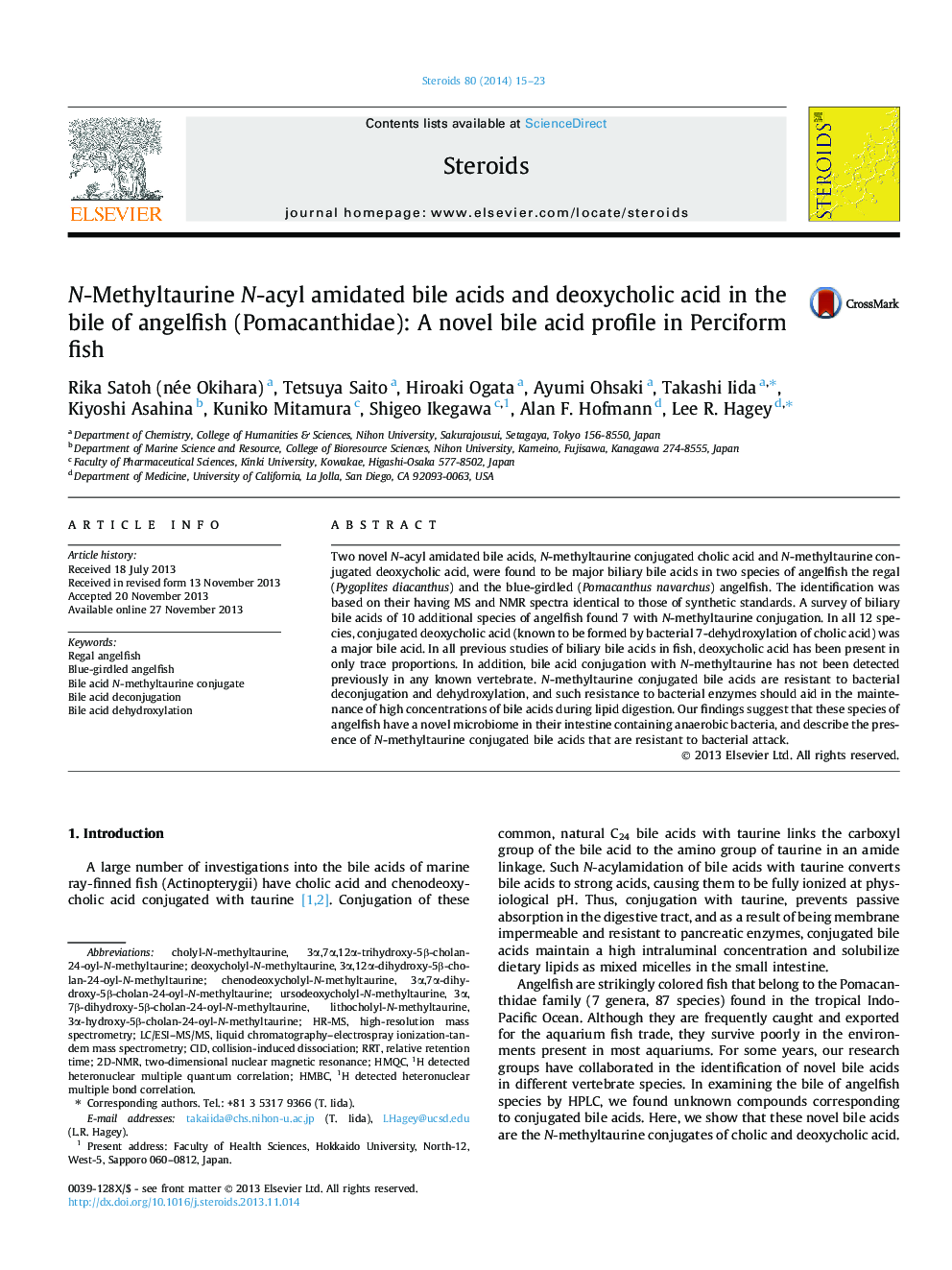| Article ID | Journal | Published Year | Pages | File Type |
|---|---|---|---|---|
| 2027901 | Steroids | 2014 | 9 Pages |
•The N-methyltaurine conjugates of cholic and deoxycholic acids were identified in angelfish.•The authentic samples were synthesized from respective bile acids.•The structures of the novel conjugates were established by MS and NMR.•The conjugate of deoxycholic acid may have evolved to insure high bile acid concentrations.•The results suggest that angelfish possess an unusual intestinal microbiome.
Two novel N-acyl amidated bile acids, N-methyltaurine conjugated cholic acid and N-methyltaurine conjugated deoxycholic acid, were found to be major biliary bile acids in two species of angelfish the regal (Pygoplites diacanthus) and the blue-girdled (Pomacanthus navarchus) angelfish. The identification was based on their having MS and NMR spectra identical to those of synthetic standards. A survey of biliary bile acids of 10 additional species of angelfish found 7 with N-methyltaurine conjugation. In all 12 species, conjugated deoxycholic acid (known to be formed by bacterial 7-dehydroxylation of cholic acid) was a major bile acid. In all previous studies of biliary bile acids in fish, deoxycholic acid has been present in only trace proportions. In addition, bile acid conjugation with N-methyltaurine has not been detected previously in any known vertebrate. N-methyltaurine conjugated bile acids are resistant to bacterial deconjugation and dehydroxylation, and such resistance to bacterial enzymes should aid in the maintenance of high concentrations of bile acids during lipid digestion. Our findings suggest that these species of angelfish have a novel microbiome in their intestine containing anaerobic bacteria, and describe the presence of N-methyltaurine conjugated bile acids that are resistant to bacterial attack.
Graphical abstractFigure optionsDownload full-size imageDownload as PowerPoint slide
